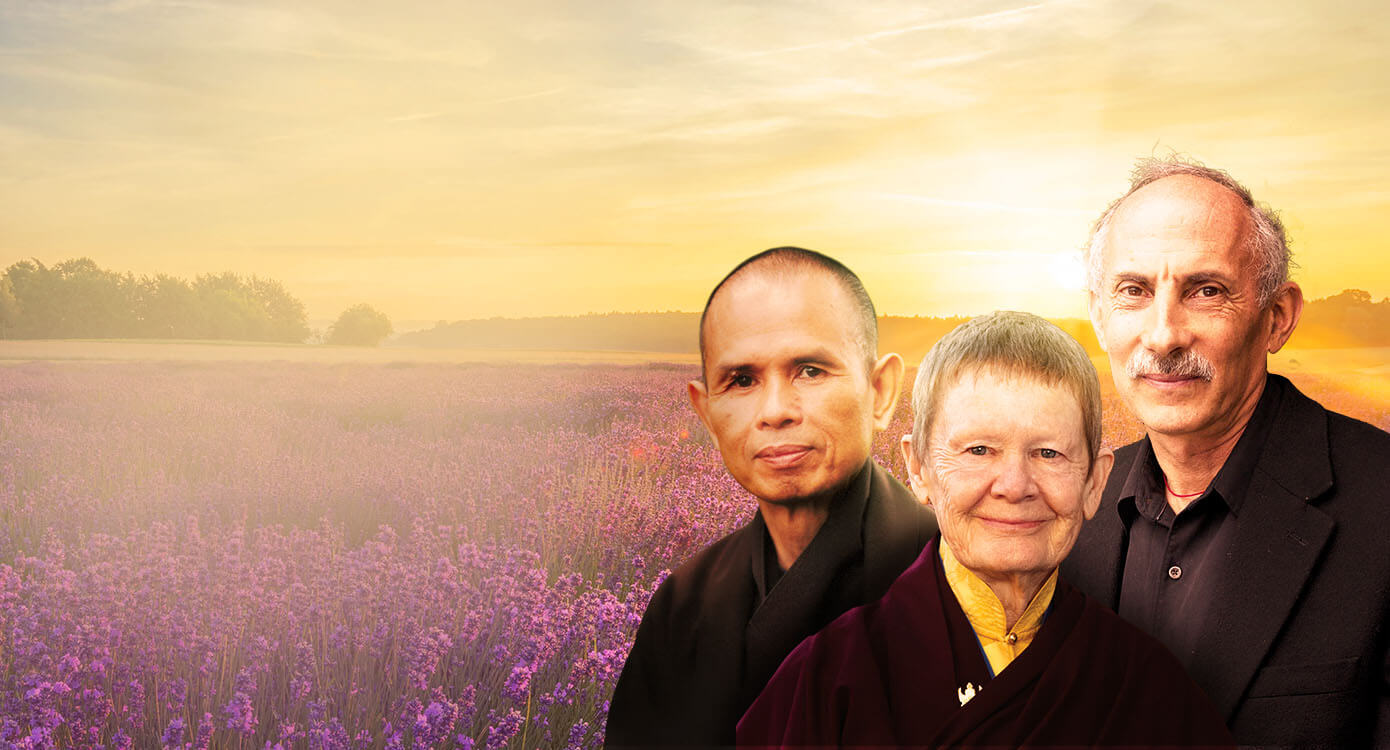Guided meditation for beginners often starts with a quiet realization, a longing for presence, calm, or connection. For many, this path opens when life feels cluttered, rushed, or emotionally heavy. Let’s explore why meditation speaks to people across backgrounds and life stages.
Meditation Reconnects You With What Matters
Many people feel pulled in a dozen directions throughout the day. Screens, schedules, and stress all ask for our attention. Eventually, something inside says, pause. That’s where meditation begins, not as a performance or a goal, but as a daily invitation to listen inward.
Practicing meditation for beginners helps create that pause. Over time, it nurtures patience, emotional steadiness, and self-kindness. Every time you sit, you’re choosing to come home to yourself in a world that rarely asks you to do so. Since no two sessions are alike, some may feel frustrated or fidgety, while others feel spacious and still. Each experience teaches you something about your mind and the truth of the present moment. With practice, this gentle form of attention becomes a refuge.
The Science-Backed Benefits of Meditation
Research from Healthline highlights several health-related benefits tied to regular meditation practice. These insights offer encouragement for those looking to care for both mind and body through consistent, mindful attention.
- Eases stress and anxiety: Meditation has been linked to lower cortisol levels and reduced physiological stress responses.
- Regulates emotional responses: Practicing regularly may lead to more balanced moods and increased awareness of emotional patterns.
- Boosts self-awareness: Meditation creates space to notice thoughts, habits, and internal narratives free from judgment.
- Supports pain management: Studies suggest that meditation can shift your relationship to pain, helping you respond instead of react.
- Sharpens focus and attention: Many people experience clearer concentration and less mental clutter over time.
Create A Sacred Space That Welcomes You In
One of the most meaningful ways to begin a meditation practice for beginners is by choosing a dedicated spot in your home. This small area doesn’t need to be fancy. A quiet nook, a sunlit corner, or even a well-loved cushion can become a perfect space for you to decompress.
Why This Space Matters For New Practitioners
Starting something new often comes with a mix of curiosity and hesitation. Having a consistent place to return to each day makes meditation feel more accessible. A sacred space acts as a gentle threshold. Once you step into it, your body and mind start to soften, ready to settle. Returning to the same spot regularly can create a kind of spiritual muscle memory. Over time, even glancing toward that space reminds you that stillness is within reach.
How To Create A Sacred Space In Your Home
Begin with a few items that feel meaningful. Some people choose stones, crystals, or small altars. Others prefer lighting a candle, placing fresh flowers nearby, or including a photograph that brings them peace.
The sensory details matter, too. For example, a soft blanket, a grounding scent, or calming instrumental music can help settle your nervous system. Before each sit, you might take a moment to clear the space. Open a window. Tidy what’s around you. Or simply pause, breathe, and check in with how the space feels today. This mindful preparation becomes part of the ritual, setting the tone for stillness. Remember that you don’t need perfection to meditate.
How To Find A Comfortable Posture For Meditation
Starting a meditation for beginners practice doesn’t require a specific pose or strict technique. What matters most is choosing a position that feels natural, steady, and supportive of your body’s needs.
At the start of your practice, take a moment to notice how your body feels. A slight ache, a buzzing foot, or tightness in the shoulders might arise. A folded blanket, a pillow behind your back, or a block beneath your knees can offer just enough support to invite softness.
As you settle in, let your hands rest where they feel most at ease, on your lap, on your knees, or gently cupped together. You might choose to close your eyes or simply lower your gaze to the floor in front of you. These subtle decisions shape the tone of your practice, helping you feel grounded without pressure.
Throughout your session, your attention may drift toward physical sensations or the urge to move. When this happens, return to your posture with kindness. The goal is not to achieve stillness but to listen. Every fidget, breath, or shift in awareness becomes part of the experience, and with time, you’ll recognize what comfort looks like for you.
What To Do When Discomfort Shows Up In Your Practice
Discomfort is a natural part of meditation when you’re just beginning. Your body might speak up with tension or tingling. Your mind might wander or stir up feelings you didn’t expect. These moments may feel frustrating, but they’re also signs of presence. When something inside you stirs, it means you’re paying attention.
Rather than forcing stillness or ignoring what's there, try shifting your approach. You might stretch a leg, soften your shoulders, or gently readjust your seat. Give yourself the freedom to move with care. Some people find it helpful to breathe through the discomfort, placing awareness on one area at a time. Others might silently repeat a grounding phrase like “I’m here” or “This moment matters.” Regardless, these small gestures invite gentleness into your practice.
Body Scans And Self-Compassion Can Help You Stay Present
A body scan can be a powerful way to stay connected during moments of restlessness. Begin by bringing attention to your toes. Are they warm, cool, heavy, or light? Once you’ve recognized these feelings, move slowly upward through your feet, legs, and torso. You might notice a knot in your back or a flutter in your chest.
Instead of bracing against it, offer kindness. You could place a hand over your heart, whisper reassurance, or simply breathe into that space. With each session, you’re building the muscle of self-awareness. You’re learning how to stay with yourself through discomfort and care, rather than pushing it away. Over time, this becomes part of your practice: one breath, one sensation, one choice to return at a time.
Using Sound And Mantra To Steady The Mind
Many people exploring meditation find silence overwhelming at first. When thoughts tumble in every direction, sound can offer a gentle point of return. A steady rhythm or soothing tone gives the mind something to rest on, helping you stay grounded in the present moment.
Sound has long played a central role in spiritual practice. Some traditions use Tibetan singing bowls or softly chimed bells, while others rely on nature’s music, like flowing water, rustling leaves, or birdsong outside an open window. Even humming a favorite song can slow your breath and invite a deeper sense of calm, surrounded by nature’s embrace.
Mantra is another sound-based tool that many practitioners use to steady their focus. A mantra can be a single word, a sacred syllable, or a quiet phrase repeated with each inhale and exhale. Words like peace, soham, or I am here can help you stay close to the moment. Take time to find your mantra that resonates with the inner workings of your soul.
As your practice deepens, sound may become more than background. It can serve as a kind of homecoming. You might begin with a breath meditation that uses gentle inhale and exhale cues, or explore our guided tracks that blend soft music with mantras designed to help you settle.
Let Sounds True Be Your Stepping Stone To A Better Life
As your meditation journey unfolds, you may find yourself wanting more guidance, more structure, or more connection to teachers and teachings that speak to your path. This is where our Sounds True catalog becomes a meaningful companion. With a wide array of podcasts, audiobooks, online courses, and free offerings, there are plenty of ways you can deepen your experience at home.
Find Breath Meditations, Guided Practices, And Online Courses
For those easing into meditation, audio guidance can be a powerful anchor. Sounds True offers access to calming resources like breath meditation sessions that pair simple cues with steady rhythms. These practices help new meditators settle their awareness without pressure or performance.
To explore more spiritually expansive experiences, you can listen to episodes like Meditation and Kundalini Awakening, which introduce deeper energetic concepts in a grounded, accessible way. Whether you’re curious about breathwork, mantras, or presence-based awareness, there’s something here to meet your current moment.
Grow At Your Own Pace
One of the most welcoming aspects of the Sounds True platform is the variety of formats. You might start your day with a short podcast while stretching, or end it with a guided session from one of their digital courses. The content is designed to be flexible and resonant, meeting your curiosity at your own pace.
To explore gentle entry points, try how to meditate, a grounded guide featuring wisdom from beloved teacher Pema Chödrön. For curated beginner-friendly tools, visit meditation for beginners and browse practices designed for those taking their first steps inward.
Read more:
Sources:
- https://www.healthline.com/nutrition/12-benefits-of-meditation








